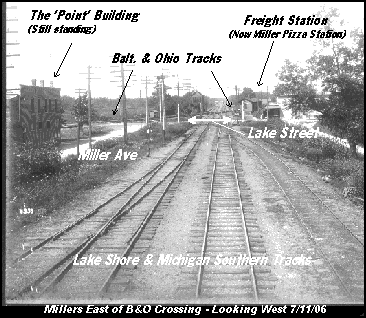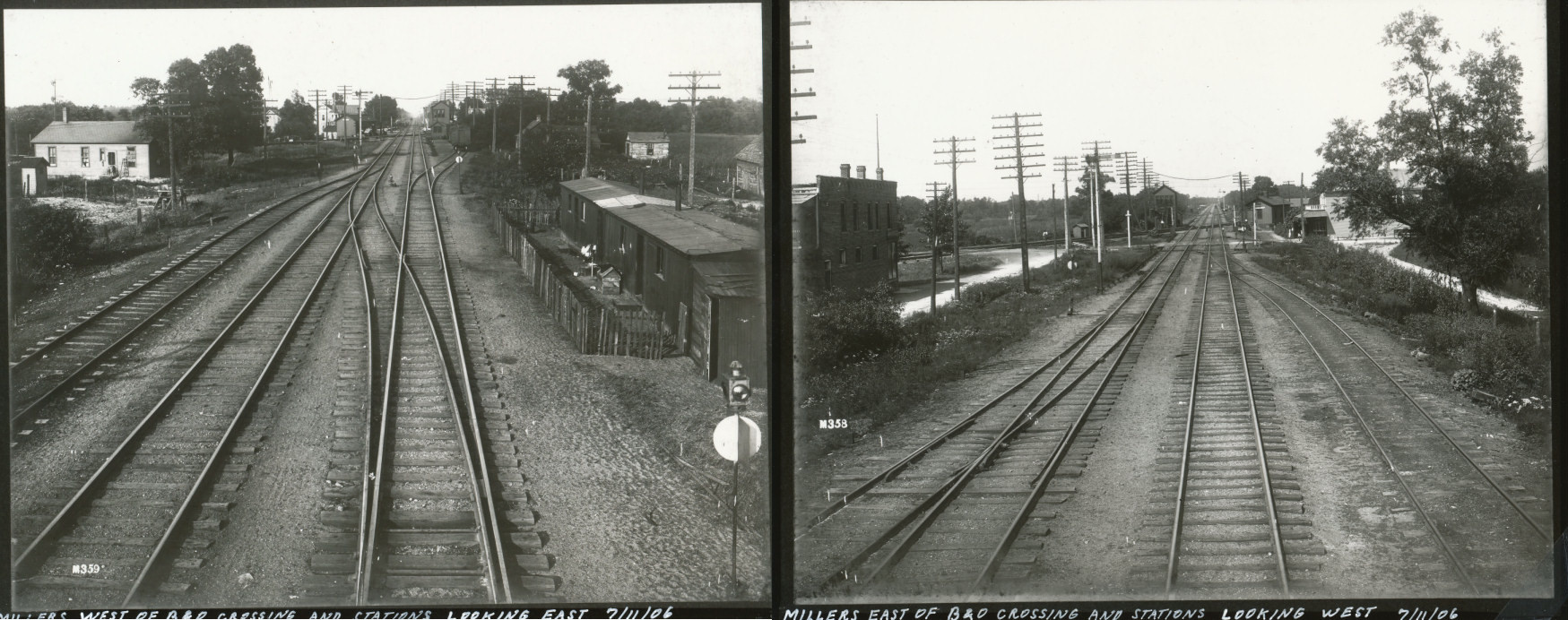Railroads in Miller: Now and Then

Railroads bisecting Miller have been a fact of life for Miller residents almost from day one. Samuel Miller, for whom Miller probably got its name, ran a boarding house near the tracks and no doubt fed rail employees who operated the coal and watering station here. It was "Millers" on the early timetables. The railroad gave Miller its name on the timetables.
The last stretch of the Lakeshore and Michigan Southern pushed through to Chicago in 1852. It was then the called the Michigan Southern and Northern Indiana. It was no doubt the hardest stretch to build given the sandy environment. The tracks went right down what is currently Miller Ave., but were moved north in 1906 when Gary was built. By 1874 that railroad had been acquired by Cornelius Vanderbilt and incorporated into his New York Central line although it continued to operate as the L.S. & M. S. Vanderbilt was in furious competition with the Baltimore & Ohio RR which extended its line to Chicago in 1874 as the Baltimore, Pittsburgh & Chicago, cutting through Millers and crossing the L.S. & M.S. It was the age of the railroad and many more lines cut through Northern Indiana south of Millers. Competiton was fierce: Vanderbilt even used his influence in Washington to get the name "Millers" changed to "Vanderbilt" at one point. See the Name page for more.
Today the railroads provide a constant source of irritation to Miller residents, but not enough for them to abandon the dunes. The original B & O line is now the CSX tracks which are a double line crossing Lake Street and effectively cutting off getting in and out of Miller when trains are stalled. Just south of those are the South Shore Line, a commuter line which stops at Miller and is either the last, or nearly the last, electric interurban railroad in America. There are two tracks which bridge across Grand Blvd and Lake Street. The southern track of the two is currently owned by The Norfolk Southern Line but were originally the New York Central. The abandoned northernmost right-of-way is now Marquette Trail that runs between County Line Road and Grand Blvd. It had been part of the Indiana Harbor Belt Line.
The Lake Shore and Michigan Southern Railway in Miller, Indiana

"From 1869 to 1914, the Lake Shore & Michigan Southern Railway was the route of empire as the young American nation began its expansion westward. It's tracks, laid by several of its predecessor lines, were the first rail connection between New York City and Chicago. Thereafter, the rail line became the crucial link and backbone of the burgeoning industrial and agricultural heartland...For generations after the Civil War, the L.S & M.S. was the best way West."1

![[LakeShore and Michigan Southern Logo]](../mil_imgs/hist/ls_logo.gif)
In 1869 the L.S. & M.S Railway was formed by the consolidation of four smaller railroads into one complete line between Chicago and Buffalo. It's predecessor, the Michigan Southern and Northern Indiana RR, laid the first tracks through the Calumet region in 1851, through the most difficult terrain on the entire road. Before that time the route overland, through marshes, wetlands and sand, was laborious in the extreme.
The town of Miller, Indiana was settled when the Michigan Southern established a coaling and watering stop at that location. In 1874 the B & O Railroad pushed it's tracks through to Chicago crossing the L.S & M.S. at Miller. When the mills were built at Gary in 1906 the tracks that ran down Miller Ave were torn up and moved further north. And in 1914 the L.S & M.S. RR, which was by then owned almost exclusively by Cornelius Vanderbilt, was absorbed into his New York Central line.
In 1904 those tracks saw the first running of the 20th Century Limited, perhaps America's most famous passenger train.
This 1906 annotated photo shows the L.S & M.S. RR tracks on what is now Miller Ave in Miller Beach.



1McLellan, David and Warrick, Bill,
The Lake Shore and Michigan Southern Railway, (Polo, Ill, 1989), p 9.
I'm indebted to the authors of this book for bringing this railway alive and back
from the ashes, as well as the help that they have given me.